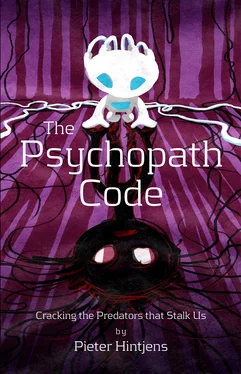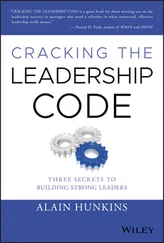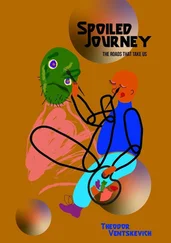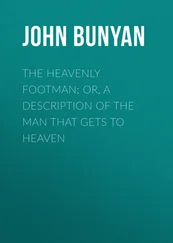❂ Shame - the emotion which says, "I’m aware that I broke the rules." Again, this is about detecting professional rule breakers. Shame has a specific skin flushing pattern: face and ears. Mallory can mimic the body language, yet he cannot blush nor show red ears. Shame is such a powerful psychopath filter that social humans also mimic it, by blushing.
❂ Remorse - the emotion which says "sorry" and asks others to forgive us. Remorse has a body language, yet the key to an authentic display is timing and duration. You must say "sorry" at the right time, and for the right amount. To do this requires empathy for dislike and revenge . Mallory cannot show remorse in a way that satisfies other people.
❂ Impatience - the emotion of someone else delaying you. The social response to impatience is remorse, with an apology. Like remorse, this takes empathy to get right. The human obsession with time keeping and schedules seems bizarre. When you see it as a psychopath detector, it makes sense.
❂ Revenge - the emotion of punishing a rule breaker. This is the emotion that pushes us to actually confront and expel psychopaths. Catching Mallory’s infidelity, theft, deception, or other violations, we fill with indignation and revenge. This propels us out of Mallory’s hands.
The concept of a "social code" is foreign to Mallory. She can learn it, yet it is never a native concept. She disregards others' needs by definition. This means she cannot deduce rules like "keep quiet when others are sleeping." If you explain a rule to her, her mind immediately breaks down the opportunity and risk. She obeys rules not because others would suffer. Rather, because they are not worth breaking.
A good social code is such a valuable defense against psychopaths that most are willing to pay to enforce it. You can see the development of modern society in this light. History shows an ever-decreasing rate of violence. Much of the apparatus of the State is about social regulation, and punishment of cheats.
Alice and Bob don’t need to learn to defend social codes. When they learn a code, and see someone break it, they feel dramatic anger and then the emotion I call revenge . The two together tell other people "Someone has done something bad and made me angry!" and then "Please join me in punishing this person!"
Mallory can mimic both these emotions, and can do this two-step display well. Yet our empathic response to revenge is distrust. The more dramatic the display, the less we trust it. There are two ways to get support from the group. Mallory does it by building up hate and fear towards her target before she launches her anger and revenge act. This works, in specific cases. Then we get crusades, lynch mobs, and witch hunts, with Mallory at their head.
Alice and Bob get support for revenge by proving sincerity. In other words, that they have no personal stake. The best proof is to sacrifice assets, time, or personal security. A martyr inspires by proving the honesty of their cause.
To escape the accumulation of consequences, Mallory moves around more than average. She is good at learning local culture and manners. She can mimic accent and body language well. People often find her polite, obsessed with etiquette and manners. Only when you get close do you realize that this is superficial. Her manners serve to impress important people. Her behavior towards those she considers unimportant is cold and dismissive.
She manipulates others' social accounting, with a series of tactics that I explained in Attack and Capture . If she’s caught cheating, her response is denial, and blame-shifting. Mallory can imitate shame , yet without the tell-tale ear flushing. Shame is a such a good psychopath test that Mallory doesn’t even try to fake it. And remorse without shame is an empty gesture we disregard.
If you push Mallory, she will try a range of dramatic evasions. She may break down with dramatic weeping, doing good imitations of self-pity and distress . She may turn furious on her accuser, or other parties, heaping invented crimes on their heads. This "defend by attacking" behavior is classic, though not unique to psychopaths. Or, she may just leave. Only a psychopath can turn the emotional investment dial from all to nothing in a heartbeat.
Emotions are adaptations that helped our ancestors to survive. So there are no "negative" emotions as such. Yet our emotions can turn from helpful to harmful. Many people find their emotions are out of balance. They are anxious for no identifiable reason. They feel distressed, afraid, hateful. They cannot find happiness.
Some emotions, like fear and hate, can lead to terrible suffering, in the wrong hands. I explained how Mallory can use these emotions to push a group towards the worst kinds of violence.
So many emotions trigger in ways that we can call "negative." We can recognize these negative triggers, and we can become resistant against them.
There are two main reasons for negative triggering. The first is history. We evolved for a different world with fewer people and far more real dangers. Modern life is safe, easy, and yet complex and filled with other people. We compete with each other for toy points. Exposure to the elements, ignorance, or non-human predators is the exception, not the rule. We are a species on holiday. Our emotions are often the idle hands waiting for the Devil’s commands.
The second reason is Mallory’s ability to turn our emotions against us. By faking the right triggers, he throws us left and right like puppets. He is immune to most manipulation. His own emotional range shrinks back to the tiny ancestral set of predator emotions. You can manipulate him through these emotions, with practice. It’s not just Mallory who pulls our strings. Entire industries have learned how to use our emotional responses against us.
I’m going to take each emotion and explain common negative triggering for it. This isn’t a full breakdown. It’s a basis for your own thinking and personal research. Everyone is unique and has their own sensitivities. The goal is to understand how emotions trigger in your own mind.
Let’s look at negative triggers for the predatory emotions:
❂ Hunger - the emotion of looking for prey. Trigger: images of plumped-up food and other consumables: cars, clothes, shoes, and drinks. Such images form the bulk of advertising. They speak to hunger, and can exert a powerful effect until you realize what the trick is.
❂ Obsession - the emotion of stalking a prey. Trigger: repeated images of the same consumable. This is a goal of saturation advertisement, to move you from hunger to obsession. Once you want a specific consumable, you ignore alternatives. As long as the object of your obsession is within reach, you fixate on it.
❂ Euphoria - the emotion of chasing a fleeing prey. Trigger: consumables that are just out of reach. A budget model does not trigger euphoria. A luxury model does. Smart marketers know this, and offer every wallet an option that hurts.
❂ Glee - the emotion of seeing your prey stumble. Trigger: luxuries at a discount. We feel glee when we get a good deal on a prized item. This effect is so strong that people will camp outside shops for hours. They’re waiting for that extraordinary prize and the feeling that comes with it.
❂ Fury - the emotion of attacking your prey. Trigger: plastic packaging that is impossible to open. I’m only half-joking. How often have you resorted to using your teeth to open a stubborn pack of food? And what was the emotion you felt when it finally opened?
Читать дальше












